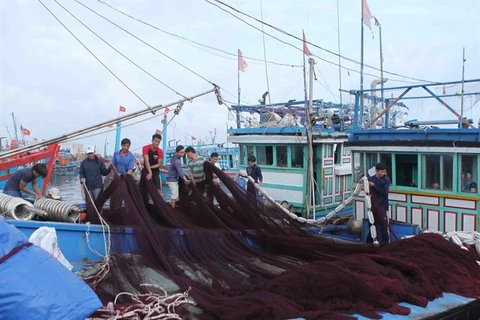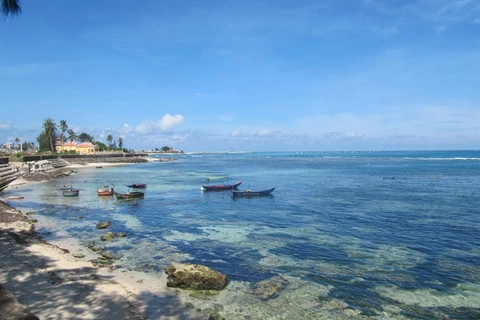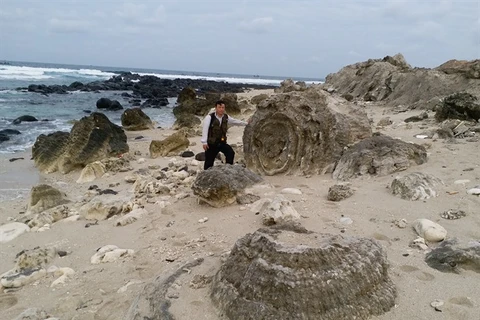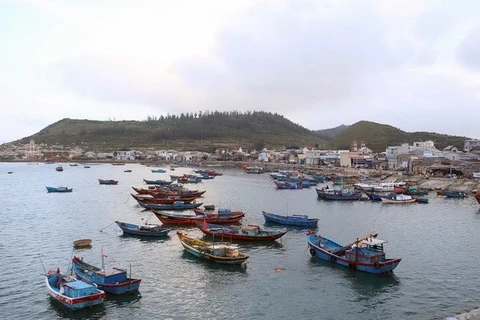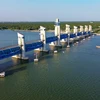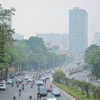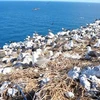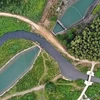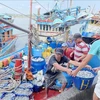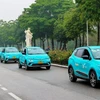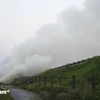 A banner in Cham Island’s Huong beach warns tourists and local residents not using plastic bags in keeping the ocean clean (Photo: VNA)
A banner in Cham Island’s Huong beach warns tourists and local residents not using plastic bags in keeping the ocean clean (Photo: VNA) Quang Ngai (VNA) - The International Union for Conservation of Nature (IUCN) has launched a communication campaign to cut the use of plastic bags on Ly Son island, as a prelude to its sea turtle conservation programme on the island.
IUCN’s Marine and Coastal resource programme co-ordinator Bui Thi Thu Hien said the communication campaign, which is scheduled for May 15 to June 1, aims to raise awareness among islanders and tourists of the need to create clean and safe marine areas for sea turtles returning to the island.
She said the programme will encourage hotel owners and tour operators to commit to providing free drink water for tourists when visiting the islands as part of the initiative ‘Refill, Not Landfill’.
The campaign also wants to send a message ‘Down 1 bottle, Save the Future’, to reduce the use of single-use plastic bags to save the ocean from plastic pollution.
Last year, IUCN, with financial support from the US Fish and Wildlife Service and in collaboration with Ly Son island district, debuted a collection of 30 murals with the theme ‘I love the ocean, and I’m born to be wild’ in An Binh islet commune, focusing on protecting the marine turtle, a species considered an indicator of the status of the coastal environment.
Quang Ngai beaches, including areas in Binh Son district on Ly Son island, had 200 sea turtles regularly approaching the beaches to lay their eggs in the 1980s.
However, the figure dropped by 90 percent between 1980 and 2000 due to rapid urbanisation, over-fishing and the construction of concrete dykes.
On Cham island, a world biosphere reserve site in Quang Nam province, the management board of Cham island’s Marine Protected Area has begun a campaign to stop the use of plastic straws and single-use plastic cups among locals and visitors.
The local community is being encouraged to reuse and recycle material straws (metal, bamboo or grass).
The island, 20km off the coast of Hoi An beach, was the first locality in Vietnam banning the use of plastic bags and promoting the 3-R (reduce, reuse and recycle) programmes in 2011.
Island officials said all tourists are warned to leave nylon bags on the mainland before going on a speedboat trip to the island.
About 3,000 inhabitants of Cham island and tourists release three tonnes of garbage each day, according to the island commune’s committee.
About 4,800 colonies of coral have been grown on an area of 4,000sq.m since 2012, and the island is home to 1.26sq.km of coral reefs.
It hosts some 100,000 tourists annually, 10 percent of whom are foreigners.
Cham island’s Marine Protected Area management board has also launched electronic tickets instead of paper for travelling to the island.
The digital system helps limit paper use for ticket printing and reduces waste.-VNA
VNA
